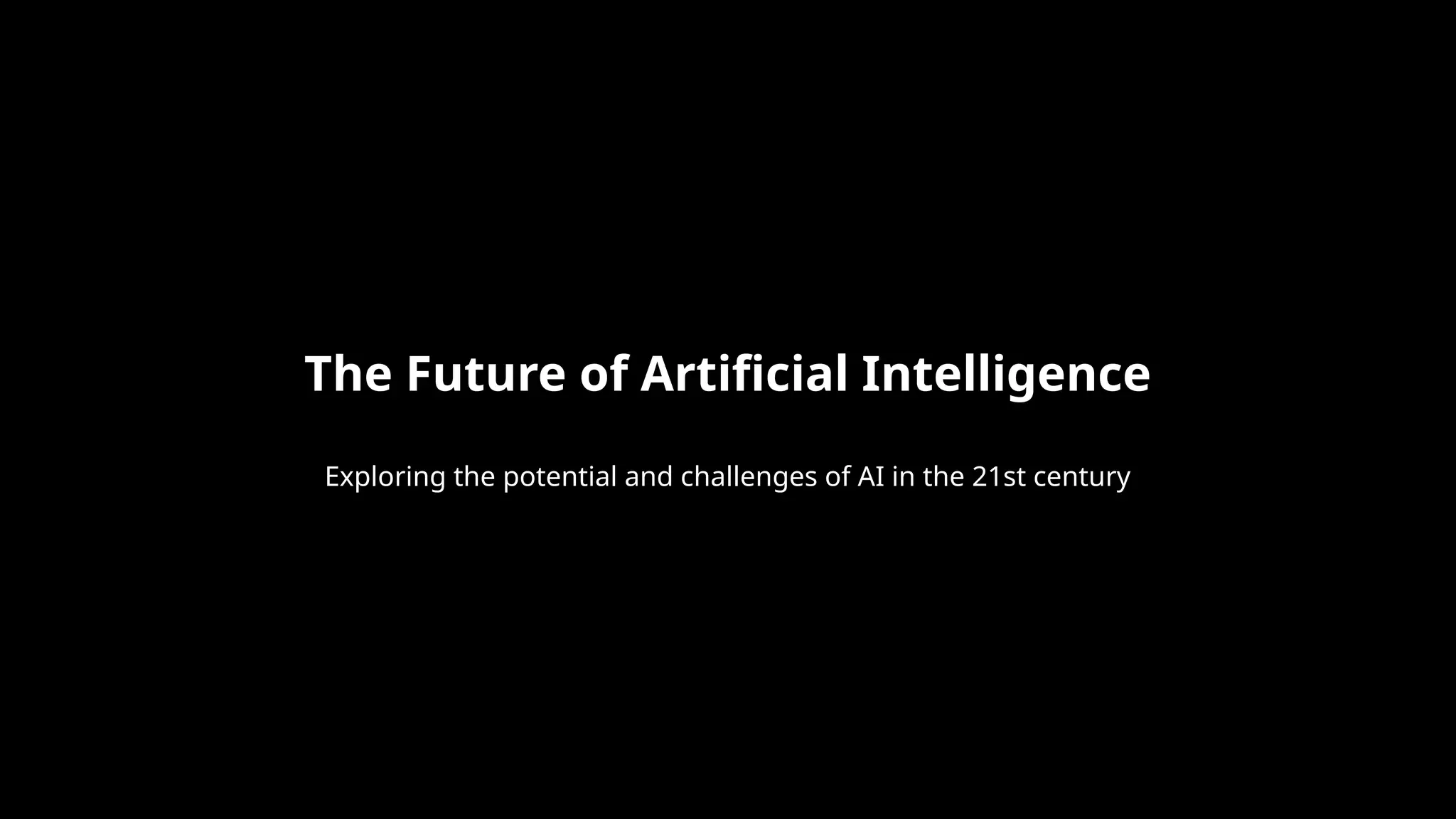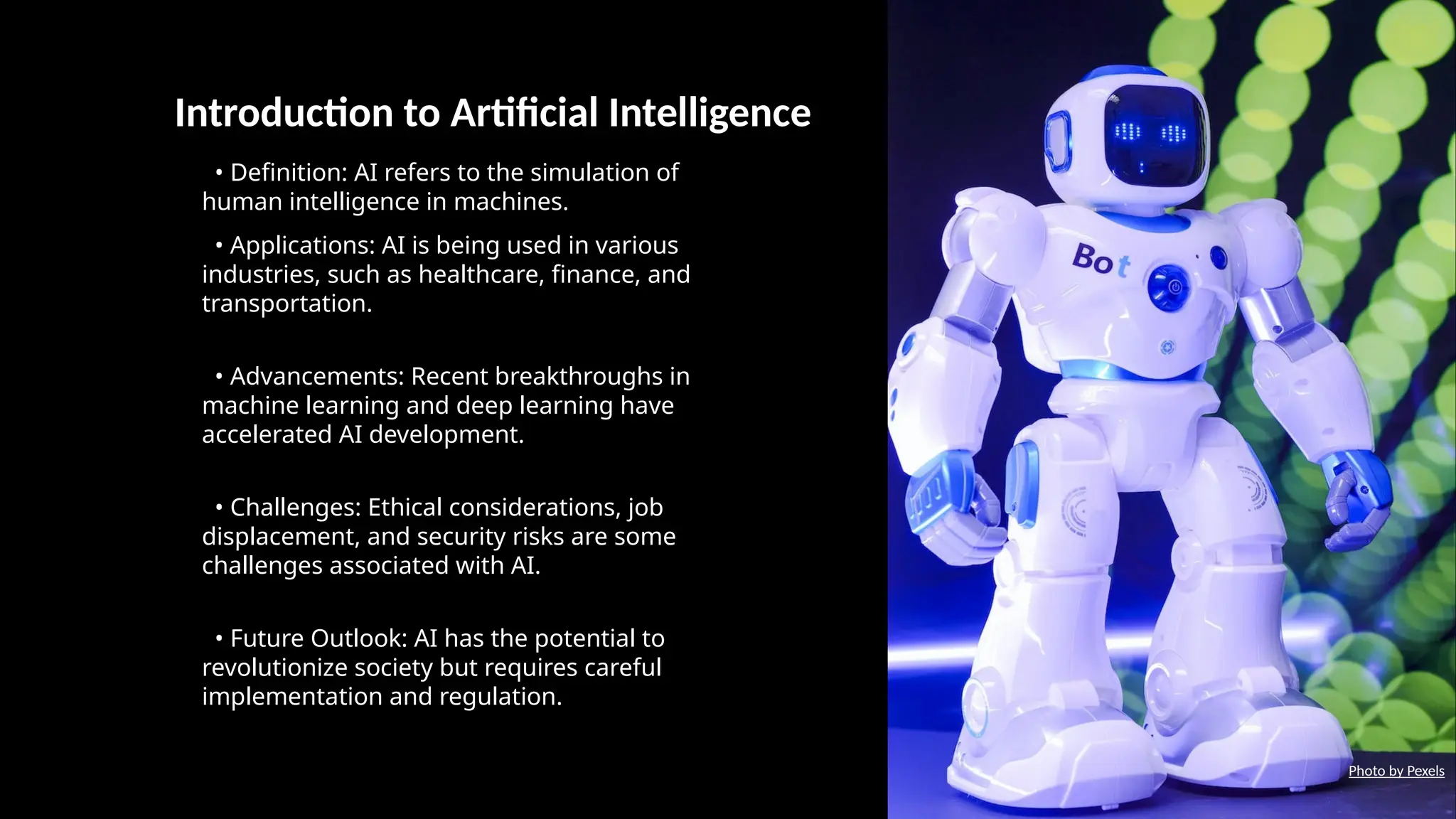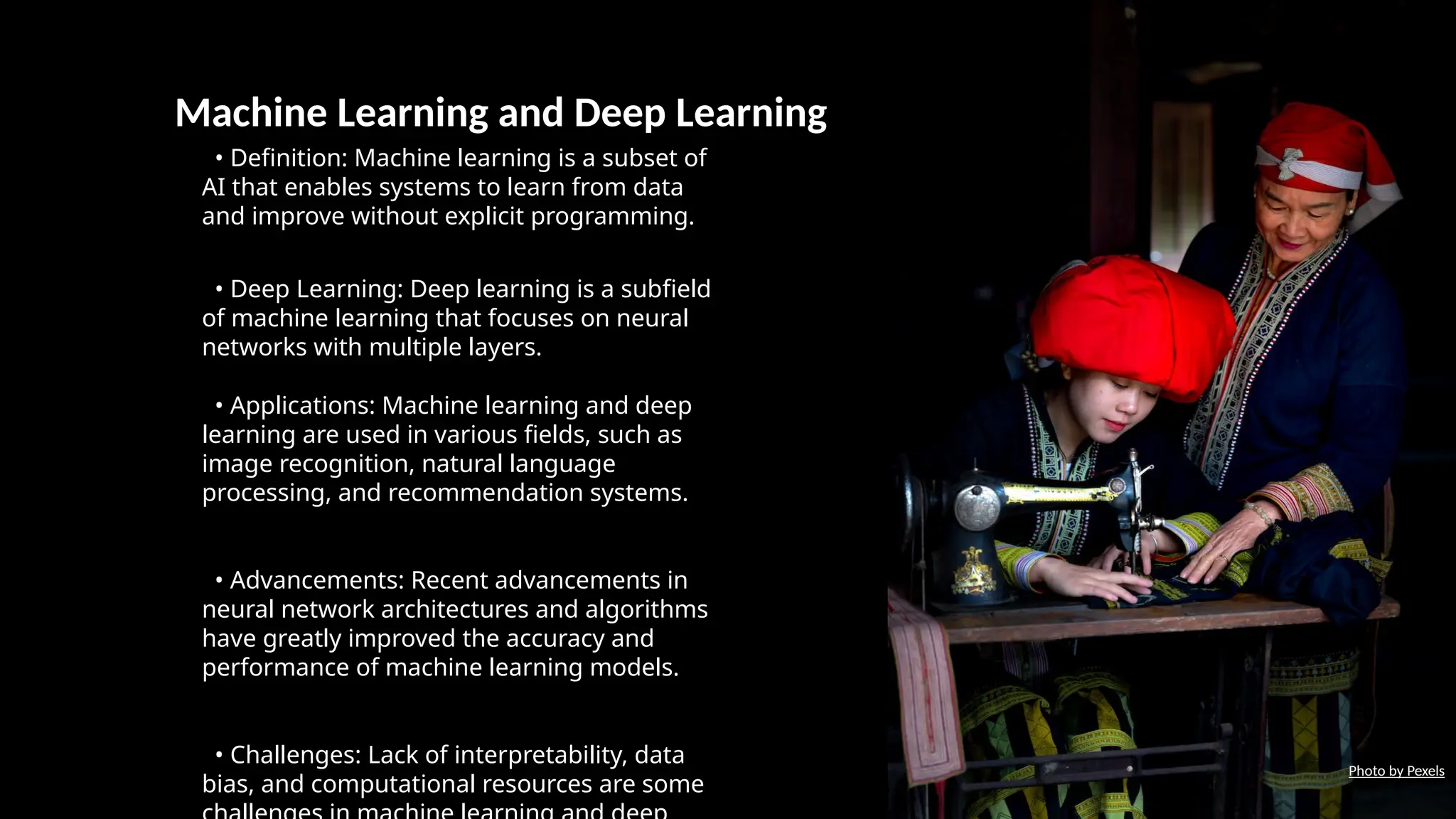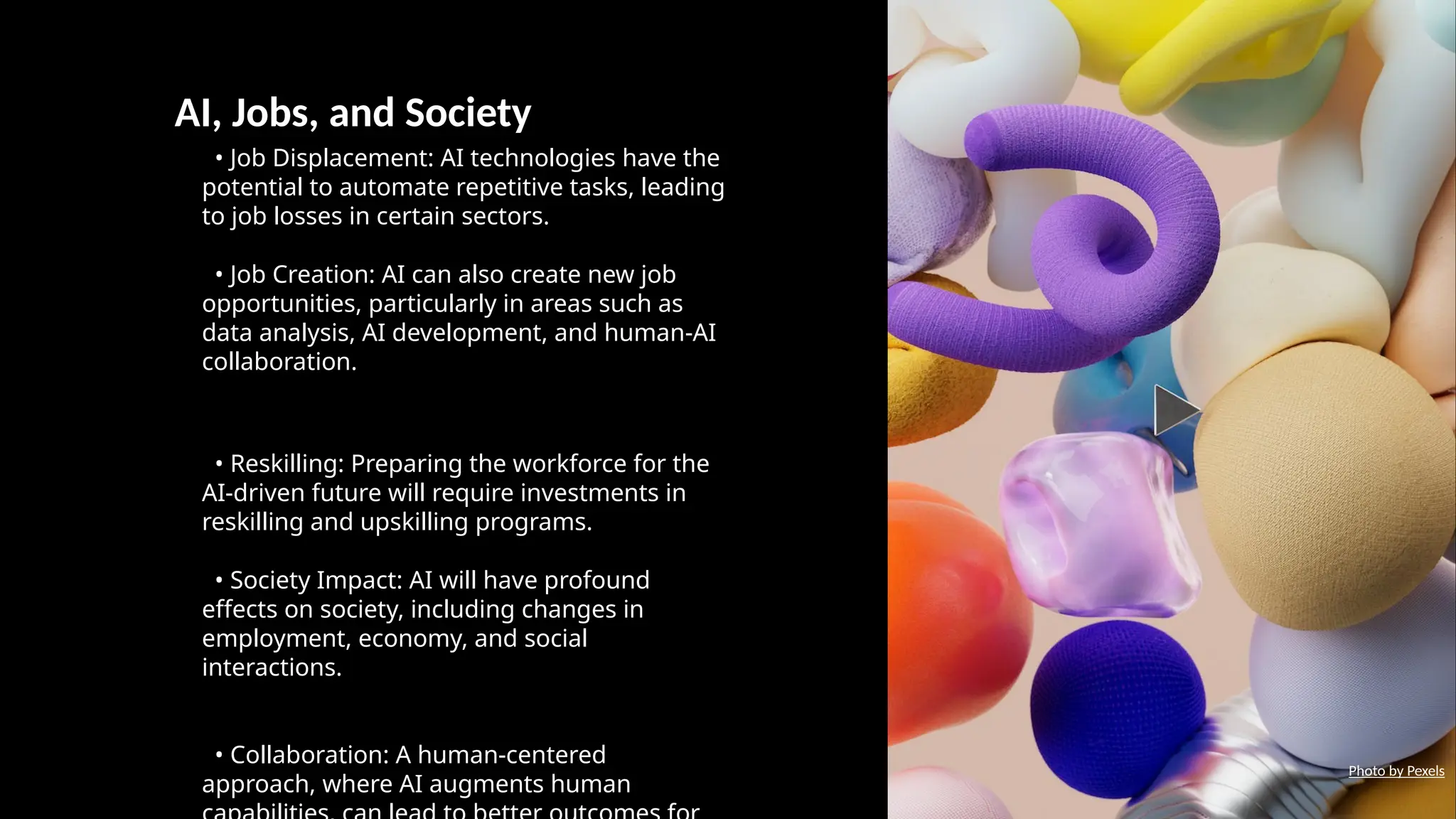The document explores the potential and challenges of artificial intelligence (AI), highlighting its applications across various industries and recent advancements in machine learning and deep learning. It discusses ethical considerations such as privacy, bias, and transparency, along with the impact of AI on jobs and society, including job displacement and the need for reskilling. Additionally, it emphasizes the importance of security, governance, and international cooperation to mitigate risks associated with AI technology.





